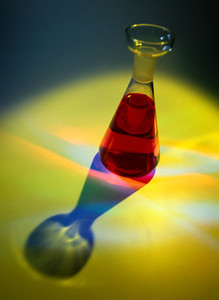Growth in the use of biosimilars is being driven by the need to reduce healthcare costs, patent expiries on blockbuster originator biologicals and better-defined regulatory pathways.
Factors affecting market access of biosimilars
Biosimilars/Research
|
Posted 03/02/2012
 0
Post your comment
0
Post your comment

The biosimilars market is expected to grow from US$243 million in 2010 to US$3.7 billion by 2015 [1], creating an enormous opportunity for biopharmaceutical companies.
There are many factors that affect the market access for a new biosimilar.
According to Professor Simoens, ‘… when considering the use of biosimilars, the question of the degree of comparability between a biosimilar and the reference biopharmaceutical needs to be considered for registration, pricing and reimbursement purposes in addition to the cost issue’.
Despite progress, many key concepts, like clinically meaningful differences, remain undefined and the question of the degree of comparability is not yet resolved [2].
The main factors affecting market access of biosimilars include:
- Registration: Europe is way ahead of the US and has general and specific guidelines for biosimilars.
- Similarity: demonstration of equivalence can prove to be a challenge due to the complexity and heterogeneity of biological molecules, therefore the emphasis is on similarity.
- Comparability studies: comparison of quality, safety and efficacy between the biosimilar and originator products is required.
- Substitution: in Europe this is left to national governments, whereas in the US the BPCI Act allows FDA to make this decision.
- Pricing: due to the higher cost of developing biosimilars it is expected that the difference in price between originators and biosimilars is likely to be less than that observed for small molecule generics.
- Reimbursement: reimbursement authorities often require different data compared to registration authorities, with cost-effectiveness rather than cost alone being taken into account.
The series of five articles that follow present how these factors differ between the US and Europe, outline areas which are still unclear and discuss how these factors affect the market access of biosimilars.
If you would like to receive a copy* of Professor Simoens’ article, please send us an email.
*For profit organisations subjected to a fee
Related articles
Comparability studies and substitution of biosimilars
Biosimilars: demonstrating ‘similarity’
Registration of biosimilars in Europe and the US
Economic evaluation of biosimilars
Speed to market critical in biosimilar development
Timing of the launch of biosimilars in Europe
References
1. GaBI Online - Generics and Biosimilars Initiative. Biosimilars or biobetters – what does the future hold [www.gabionline.net]. Mol, Belgium: Pro Pharma Communications International; [cited 2012 Feb 03]. Available from: www.gabionline.net/Biosimilars/Research/Biosimilars-or-biobetters-what-does-the-future-hold
2. Simoens S, Verbeken G, Huys I. Market access of biosimilars: not only a cost issue. Oncologie. 2011;13(5):218-21.
News
FDA approves six denosumab biosimilars
EMA recommends approval for four biosimilars targeting three therapies
General
Samsung Bioepis wins Pyzchiva case; Regeneron patent rulings threaten foreign biosimilars
Chinese biosimilars go global: growth, partnerships, and challenges
What is the future for the US biosimilar interchangeability designation

Biosimilars/Research Posted 05/06/2025
Biosimilar clinical efficacy studies: are they still necessary?

Biosimilars/Research Posted 27/05/2025
The best selling biotechnology drugs of 2008: the next biosimilars targets








Post your comment